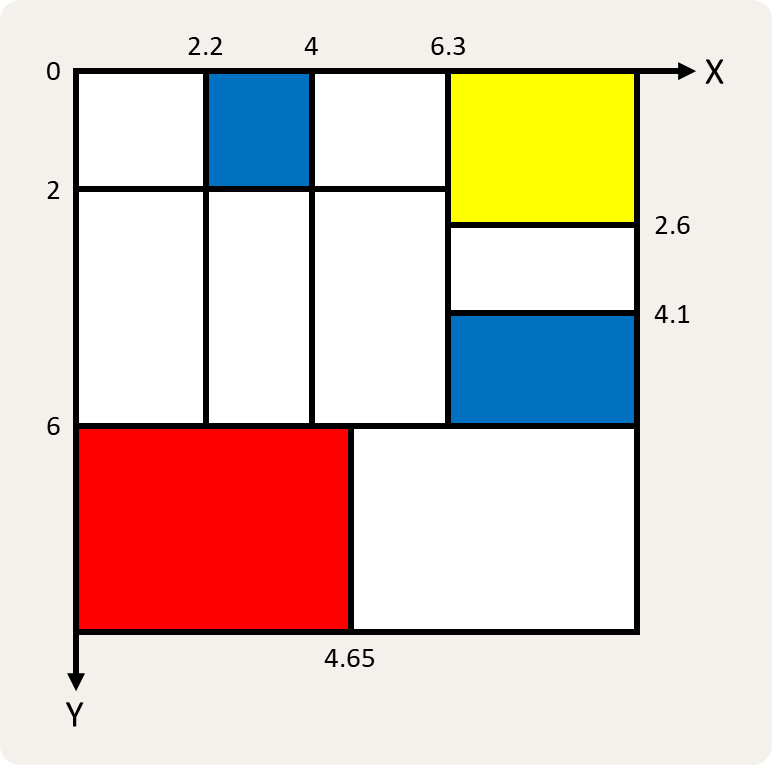Pieter Cornelis (Piet) Mondriaan1 (Amersfoort, March 7, 1872 – New York, February 1, 1944) was a Dutch painter and art theoretician, who lived and worked abroad at a later age. He is generally seen as a pioneer of abstract and non-figurative art. Especially his later geometric-abstract work — with its characteristic white ground upon which was painted a grid of vertical and horizontal black lines and the three primary colors — is world famous and serves as a source of inspiration for many architects and designers of applied art.

Mondriaan was an important contributor to the De Stijl2 art movement and he evolved a non-representational form which he termed New Plastic or neoplasticism. Between his 1905 painting The River Amstel and his 1907 Amaryllis, Mondriaan changed the spelling of his signature from Mondriaan to Mondrian.
Input
Two numbers $$x, y \in \mathbb{R}$$ ($$0 \leq x, y \leq 10$$), each on a separate line. These numbers represent the $$(x, y)$$-coordinate of a point on the painting by Piet Mondriaan that is displayed in the introduction. The painting is made up of a number of non-overlapping rectangles, having sides that are parallel to the $$X$$-axis and the $$Y$$-axis. The $$X$$-axis points from left to right, and the $$Y$$-axis from top to bottom. The coordinates of the sides of the rectangles are indicated on both axes.
Note
You may assume that the given $$(x, y)$$-coordinate is never located on the border of a rectangle in the painting, without the need to check this explicitly in your code.
Output
The color of the rectangle that contains the given $$(x, y)$$-coordinate: blue, yellow, red or white.
Example
Input:
3.5
1.2Output:
blue